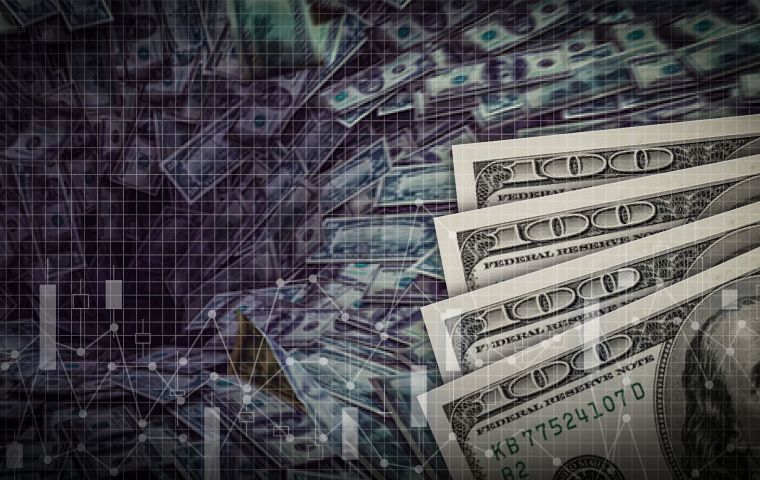MercoPress. South Atlantic News Agency
US inflation in twelve months to May slows to 4%; Fed begins two day meeting
 Measured year over year, inflation slowed to just 4% in May — the lowest 12-month figure in over two years and well below April's 4.9% annual rise
Measured year over year, inflation slowed to just 4% in May — the lowest 12-month figure in over two years and well below April's 4.9% annual rise Last month consumer prices in the United States rose 0.1% from April to May extending the past year's steady easing of inflation. The Tuesday announcement comes when the Federal Reserve begins a two-day meeting, still concerned that some measures of underlying price pressures remain high.
Measured year over year, inflation slowed to just 4% in May — the lowest 12-month figure in over two years and well below April's 4.9% annual rise. The pullback was driven by tumbling gas prices and smaller increases in grocery prices and other items.
The drop-off in overall inflation isn't likely to convince the Federal Reserve's policymakers that they're close to curbing the high inflation that has gripped the US for two years. The Fed tends to focus more on “core” prices, which exclude volatile food and energy costs and generally provide a clearer view of inflation.
And core prices remained high last month, rising 0.4% from April to May, the sixth straight month of increases at that level or higher. Compared with a year ago, core inflation slipped to 5.3% from 5.5%. That is still far above the Fed's target of 2%.
This Tuesday announcement arrives just as Fed officials begin a pivotal two-day meeting, after which they're expected to leave interest rates alone after imposing 10 straight rate hikes dating back to March 2022. On Wednesday, the central bank will likely announce that it's skipping a rate hike but may hint that it will resume raising rates as soon as July. Top Fed officials have said they're leaning toward a so-called “skip” to allow time to assess how their rate hikes have affected inflation and the overall economy.
The stubbornness of underlying inflation reflects a fundamental challenge for the Fed: The economy has steadily defied long-standing forecasts for a recession, dating back more than a year. Instead, businesses have kept hiring at a healthy pace, average paychecks are climbing and workers are freely spending their larger wages.
Though a resilient economy is great for households and businesses, it may also be helping fuel chronically high inflation. Some economists argue that many companies are keeping prices artificially high, more than is needed to cover their own higher costs, to drive profit growth.
The Fed has raised its benchmark rate by a hefty 5 percentage points over the past 15 months — the fastest pace of rate increases in four decades. Those hikes have led to much higher costs for mortgages, auto loans, credit cards and business borrowing. The Fed's goal is to slow borrowing and spending, cool the economy and tame inflation — without causing a deep recession. It's a notoriously difficult task.
There are some signs that the Fed's efforts are having the desired effect. Inflation is expected to take another big step down in the June figures that will be reported next month. Price growth could slide as low as 3.2% from a year earlier, according to some economists' estimates. That would be significantly below inflation's peak of 9.1% in June 2022, the highest level in four decades.




Top Comments
Disclaimer & comment rulesCommenting for this story is now closed.
If you have a Facebook account, become a fan and comment on our Facebook Page!